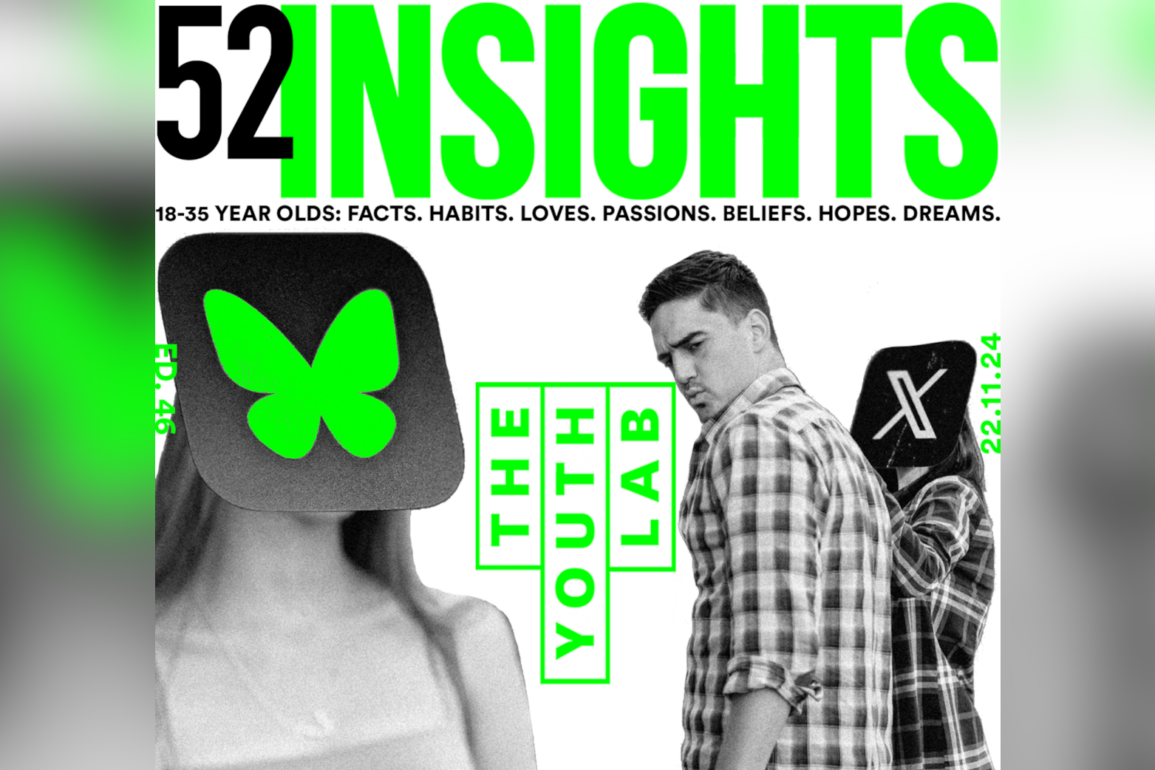
In recent weeks, a growing number of users have packed their digital bags and moved from Elon Musk’s 𝕏 (formerly Twitter) to Bluesky, a decentralised social platform built on simplicity and nostalgia. As global audiences grapple with the chaos of 𝕏, Bluesky is emerging as a hopeful alternative. Here’s what the buzz is all about and what it means for brands navigating this shifting landscape.
𝕏ODUS: Why Users are Fleeing Twitter
Elon Musk’s leadership of 𝕏 has been nothing short of tumultuous. Under his ownership, the platform has seen radical changes, from rolling back blocking features to announcing plans to sell user data for AI training. High-profile departures – from The Guardian to Stephen King – have made headlines, as have users’ growing frustrations with toxicity and unreliable content moderation.
“I left because although it could be quite funny, inevitably browsing it would descend into toxicity and complaining at every single turn. The algorithm just became a random jumble of things you missed and other things it thought you’d like.” Kevin, 26, The Love Network
The platform’s alignment with right-wing politics, highlighted by its amplification of Donald Trump’s recent election campaign (as covered in a recent 52INSIGHTS), has added fuel to the fire. In Germany, Bundesliga football club St. Pauli dubbed 𝕏 a ‘hate machine’ and migrated to Bluesky, urging fans to do the same. These moments have triggered waves of defections, with some seeking refuge in Bluesky’s more transparent and community-oriented model. It has been a long time coming, and while THINKHOUSE first predicted this shift over a year ago, things have certainly picked up pace over the last couple of weeks.
From Birdsong to Bluesky
Bluesky’s appeal lies in its simplicity, privacy, and decentralised framework. Built on the AT Protocol (a decentralised social networking technology) the platform allows users to own their data and identities while connecting across multiple apps or platforms, setting it apart from algorithm-heavy competitors like Meta’s Threads. This user-first approach has driven its growth, with Bluesky attracting one million new users daily after key moments like Musk’s controversial policy shifts and his political clashes with Brazil. Currently the #1 app on the US App Store, Bluesky has seen a 500% surge in US activity and a 350% jump in daily active users in the UK. These numbers reflect not just downloads but consistent engagement – something which Threads, despite its 100 million-plus sign-ups, has perhaps struggled to sustain.
The platform has cultivated a playful and welcoming culture, with users embracing inclusive practices like encouraging alt text for accessibility. This light hearted environment, reminiscent of Twitter’s early days, has earned the network growing credibility among journalists, creators, and niche communities. Unlike other platforms, Bluesky champions transparency – avoiding paywalls and link suppression, which have long been a problem on rival apps. This openness makes it a more appealing space for those seeking professional yet genuine engagement.
Also, as this new online space continues to grow, its decentralised framework holds promise for enhanced safety features. By incorporating community moderation tools, more robust content filtering, and clearer age restrictions, Bluesky can improve user safety, particularly for younger audiences. The promotion of positive, inclusive community norms will also be essential in ensuring the platform remains a safe and welcoming space for all users, with safety guidelines tailored to protect younger users.
“It’s great. It feels like a more real space, where I can actually have a laugh and find some decent people talking about things I care about, without feeling like I’m drowning in a flood of nonsense.” Ciara, 28, The Love Network
Community at the Core
Meanwhile, Meta’s Threads launched with high expectations but has struggled to replicate the organic engagement that made Twitter indispensable. Threads’ algorithm prioritises posts from accounts users follow, while deprioritising external links and limiting timely content – two significant drawbacks for news-driven conversations and live events. By contrast, Bluesky thrives on real-time discussions, as demonstrated during Netflix’s recent high-profile celebrity boxing event between Jake Paul and Mike Tyson. This ability to generate excitement around shared experiences highlights the platform’s unique appeal in an increasingly fragmented social media landscape.
This focus on authenticity and user agency has allowed Bluesky to carve out its niche. Its refusal to introduce advertising or use user data for AI training further bolsters its appeal. While its modest infrastructure is still catching up to its explosive growth, Bluesky’s commitment to fostering community and privacy feels refreshing in a social media landscape dominated by profit-driven giants.
The Butterfly Effect
From a brand perspective, Bluesky offers intriguing possibilities but requires a thoughtful approach. Its decentralised structure and engaged user base provide a chance to connect with niche communities authentically, but its anti-advertising ethos and evolving culture mean traditional marketing strategies may fall flat. Brands willing to experiment can build goodwill by prioritising value-driven engagement – participating in conversations, supporting creative initiatives, or aligning with Bluesky’s focus on accessibility and transparency. While it’s early days, securing your handle and monitoring the platform is a smart move to stay prepared for future shifts.
“When we introduced brands to social media in the early days of these platforms, they gathered enormous following and engagement by being first movers – gathering hundreds of thousands of followers before the platforms were commercialised. This seems like one of those magic moments where a brand (needs to be the right kind of brand / organisation) could brilliantly use the BlueSky community (which is filled with journalists and thought leaders) as a new space to listen, communicate and engage, in a cost effective manner.” Jane McDaid, THINKHOUSE founder
For now, Bluesky remains a work in progress. It’s growing fast but still ironing out technical challenges and expanding features. For brands and users alike, this is both a challenge and an opportunity. Early adopters can help shape the platform’s culture, but the question still remains: is Bluesky a long-term player or a reactionary refuge from 𝕏?
Conclusion
Bluesky’s rise reflects a broader shift in what users want from social platforms: transparency, community, and a break from algorithmic manipulation. While it’s too soon to declare it the ‘new Twitter,’ it has already established itself as a meaningful alternative in a space ripe for disruption.
Brand Takeouts
The app’s rapid growth signals important shifts for brands who want to take part:
Micro-Communities Matter
Bluesky’s early adopters are building tight-knit, interest-based groups. Brands should focus on authentic engagement and avoid interruptive tactics to resonate with these communities.
Privacy is a Priority
The platform’s decentralised, ad-free model mirrors the growing demand for privacy and transparency. Aligning with these values could strengthen your connection with local audiences.
Be Agile
Bluesky is evolving rapidly, and so are its norms. For brands, this is a chance to experiment and adapt, shaping a presence on a platform that prioritises real connections.






